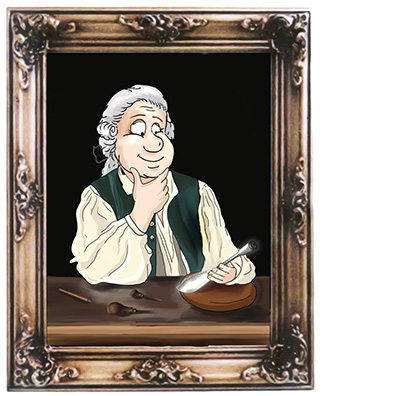
Early American silversmiths normally followed the current English styles and often long after they went out of vogue in England, so it’s not unusual to find an American rat tail ladle made in 1750 while that design in England had been out of vogue since 1730. Silversmiths of New Amsterdam later know as New York had a distinct Dutch flair to their designs. Immigrant silversmiths from Scotland, Ireland, Germany and France brought their current designs and styles and melded them with current tastes.
After the Revolution, Classical and French Empire styles helped create the new “American Federal” design in architecture, furniture and silver. As the 19th century progressed, brite-cut engraving and die-stamped patterns helped to produce silver for the burgeoning American middle class. Silversmiths used their imaginations to create intricate patterns which were uniquely American.
From the “Sheaf of Wheat” and “Basket of Flowers” of the early 19th century to the Medallion and floral designs of the 1860’s, silver entered a new era. Serving pieces of unbelievable shapes and hand-engraved scenes were created for every dish—asparagus, pasta, corn, potato chips, tomatoes etc, and all had their particular serving piece. Technology and the silversmith’s skill were the only limiting factors.
The abundance of silver metal after the discovery of the Comstock Lode made coins no longer necessary, and silver pieces became available to the general public.

